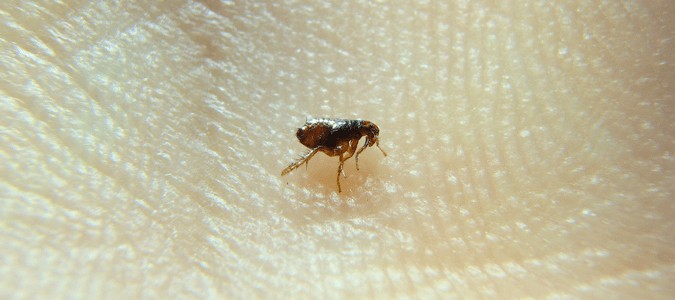Fleas are a common nuisance for pet owners, and understanding how they spread and survive is crucial for effective prevention and control. While fleas don’t have wings, their jumping abilities allow them to infest various environments, raising questions about their potential to travel via air.
 Flea Identification
Flea Identification
Identifying Fleas: What Do They Look Like?
Fleas are small, dark brown or black insects, often compared to the size of a poppy seed. Adult fleas are visible to the naked eye, reaching about one millimeter in length. They possess strong legs that enable them to jump incredible distances – both vertically (several inches) and horizontally (over a foot). Despite their jumping prowess, fleas do not have wings and cannot fly. Insects resembling fleas with wings are likely other pests, such as fruit flies or fungus gnats.
Flea Infestations: Beyond Pets
Flea infestations aren’t limited to pet owners. Rodents like squirrels and rats can carry fleas into homes, leading to infestations even without pets. Flea bites are itchy and can cause health problems for both humans and animals, including anemia, hair loss, allergic reactions (flea allergy dermatitis), and the transmission of infectious diseases.
Can Fleas Survive Air Travel?
While fleas cannot fly, their ability to jump and cling to surfaces raises concerns about their potential to survive air travel. Fleas can attach themselves to clothing, luggage, or even pets traveling in cargo, potentially spreading to new locations via airplanes. Factors influencing flea survival during air travel include:
- Temperature and Humidity: Fleas thrive in warm, humid environments. The controlled climate of airplane cabins and cargo holds may be conducive to their survival.
- Access to Hosts: Fleas need blood meals to survive and reproduce. If a flea can access a host (human or animal) during travel, its chances of survival increase.
- Travel Duration: Longer flights provide more opportunities for fleas to find hosts and potentially lay eggs.
Given these factors, it is plausible for fleas to survive air travel, though the exact survival rate is difficult to quantify.
What to Do If You Have Fleas
Fleas can thrive indoors, surviving for months, even up to a year, in the right conditions. Female fleas can lay hundreds of eggs, making it crucial to eliminate them at all life stages (eggs, larvae, pupae, and adults).
Here’s what you can do if you suspect a flea infestation:
Signs Your Pet Has Fleas
- Frequent scratching
- Visible insect bites on the skin (red welts)
- “Flea dirt” (flea feces) in fur or bedding
- Red, flaky, itchy rash
Other Warning Signs of Flea Infestation:
- Tiny tickles on skin
- Small, red, itchy bites, often on feet or ankles
- Signs appear on furniture where pets spend time
- Unexplained noises in walls or attic, suggesting a pest infestation
If you suspect a flea infestation, consider consulting a pest control professional for a thorough inspection and treatment plan.
 Flea Control Measures
Flea Control Measures
DIY Flea Control Methods
- Treat pets with flea combs, flea shampoo (recommended by a vet), and flea repellent. Consult a vet to ensure treatments are effective.
- Thoroughly vacuum carpets and fabrics. Dispose of vacuum bags immediately in an outside trash receptacle.
- Wash bedding in hot water.
- Check your lawn for damp areas and remove debris.
Preventing Fleas: A Proactive Approach
Prevention is key to avoiding flea infestations. Consider these tips:
- Regular veterinary visits for pets.
- Regularly bathe pets, using medicated shampoos or home remedies like apple cider vinegar rinses.
- Vacuum regularly, focusing on carpets and furniture.
- Steam-clean carpets annually.
- Wash bedding weekly in hot water.
- Consider using diatomaceous earth.
Conclusion
While fleas cannot fly, their jumping ability and resilience make it plausible for them to survive and spread during air travel by attaching to various objects and animals. Understanding flea behavior, recognizing signs of infestation, and implementing preventive measures are essential for maintaining a pest-free home and protecting the health of both humans and pets. If DIY methods prove insufficient, consult a pest control professional for effective treatment.
